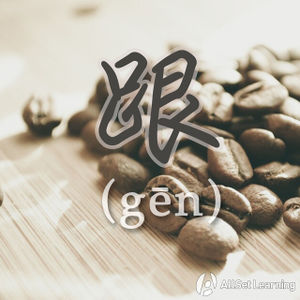Difference between revisions of "Expressing "with" with "gen""
| Line 20: | Line 20: | ||
* 我 <em>跟</em> 我 朋友 喝 啤酒。<span class="trans">I drink beer with my friend.</span> | * 我 <em>跟</em> 我 朋友 喝 啤酒。<span class="trans">I drink beer with my friend.</span> | ||
* 他 <em>跟</em> 他 家人 一起 吃饭。<span class="trans">I eat with your family members.</span> | * 他 <em>跟</em> 他 家人 一起 吃饭。<span class="trans">I eat with your family members.</span> | ||
| + | * 不要 <em>跟</em> 我 说话!<span class="trans">Don't talk with me!</span> | ||
* 你 要 <em>跟</em> 我 一起 去 吗?<span class="trans">Do you want to go with me?</span> | * 你 要 <em>跟</em> 我 一起 去 吗?<span class="trans">Do you want to go with me?</span> | ||
| − | |||
| − | |||
</div> | </div> | ||
Revision as of 07:24, 3 June 2013
-
Level
-
Similar to
-
Used for
-
Keywords
Using 跟(gēn) to express "with" is so simple, it will always be with you!
Structure
The preposition 跟 (gēn) is commonly used to express "with".
Subject + 跟 + Person + Verb + Object
Examples
- 我 跟 两 个 同事 去 北京。I went with two colleagues to Beijing.
- 我 跟 我 朋友 喝 啤酒。I drink beer with my friend.
- 他 跟 他 家人 一起 吃饭。I eat with your family members.
- 不要 跟 我 说话!Don't talk with me!
- 你 要 跟 我 一起 去 吗?Do you want to go with me?
As in the last sentence, 跟 is often used with 一起.
See also
Sources and further reading
Books
- Modern Mandarin Chinese Grammar: A Practical Guide (pp. 84, 88)→buy
- Integrated Chinese: Level 1, Part 1 (pp. 166, 167) →buy



